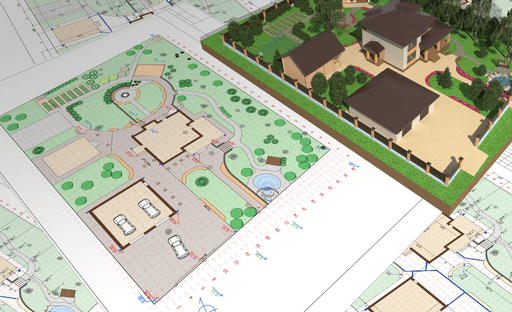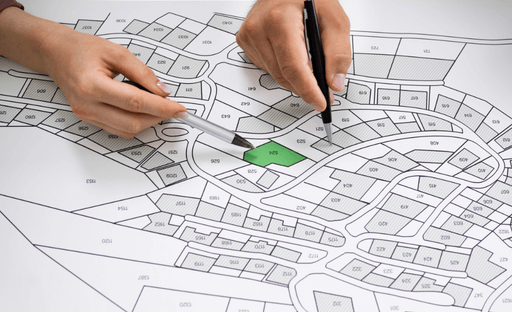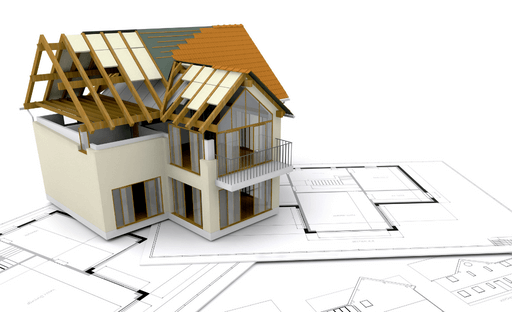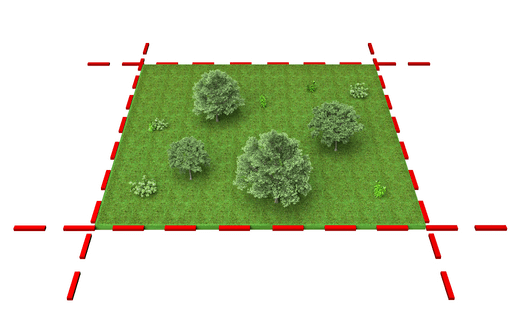Build on your land 2023
Are you considering building a home on your own land? If so, this article is for you. Here, we will explore the benefits of constructing on private property and provide insight into navigating the process from start to finish. We’ll cover everything from planning and designing a home that suits your lot to exploring financing options for construction. Read on to learn more about how to make your dream of building a house come true!
Building on your own land is a great way to create the home of your dreams. Whether you’re looking for a primary residence, vacation home, or investment property, there are many advantages to building on land that you already own. Here we will discuss some of the key benefits and considerations when deciding whether to build on your own land.
The first benefit of building on your own land is that it gives you complete control over the design and construction process. You can choose exactly what type of house you want as well as all other aspects such as size, layout and materials used in its construction. This allows for greater customization than if buying an existing property or having one built by someone else – giving you full control over how much money is spent and ensuring that everything meets your exact specifications from start to finish.
Another advantage of building on owned land is cost savings due to not having to purchase an existing structure or pay for additional services such as demolition costs associated with tearing down an old house before constructing a new one in its place (if applicable). Additionally, depending upon where the property lies within zoning regulations there may be tax incentives available which could further reduce overall costs associated with this project – making it even more attractive financially speaking!
When considering whether or not it makes sense financially speaking however; one must also take into account any potential risks involved in developing their own piece of real estate including those related but not limited to: local zoning laws/regulations; soil conditions; environmental concerns (such as endangered species); access rights granted by adjacent landowners etc… All these factors should be taken into consideration prior making any final decisions about proceeding forward with this endeavour so proper research can ensure success without unexpected surprises along the way!
Finally, another important factor when deciding between purchasing an existing structure versus constructing something from scratch involves time constraints – if time isn’t necessarily “of-the-essence” then going through all steps necessary for creating something brand new might make more sense than trying to rush through renovations/repairs needed prior moving into pre-existing space(s). Building from scratch takes longer but offers greater flexibility while still allowing owners ultimate control over every aspect involved throughout the entire process – ultimately resulting in satisfaction in knowing they have created something unique just right for them.
Overall there are many advantages associated with choosing build rather than buy when it comes to owning real estate – especially if done correctly taking all necessary precautions beforehand so no unforeseen issues arise during course development/construction phases afterwards!
Uncover the Benefits of Building on Your Own Land
Building on your own land can be a great way to create the home of your dreams. Not only does it give you the freedom to design and construct exactly what you want, but there are also many other benefits that come with this choice.

One of these advantages is cost savings. When building on your own land, you don’t have to worry about paying for expensive real estate or dealing with additional fees associated with buying an existing property. You also won’t have any hidden costs like those found in pre-existing homes such as repairs and renovations that need to be done before moving in.
Another benefit is privacy and security when building on your own land; since no one else owns it, you don’t have to worry about neighbours or anyone else intruding into your space without permission – something which can often happen when living in a neighbourhood or community setting where boundaries may not always be clear cut. This means more peace of mind knowing that whatever happens within the walls of your home stays between just yourself and family members who live there too!
Finally, having control over every aspect of construction gives homeowners greater flexibility when designing their dream house from scratch – something which isn’t possible if they buy an existing property instead! With this option comes more creative freedom as well as potential tax breaks depending on local regulations – both factors worth considering before making any final decisions about where best to build one’s future abode!
Learn How to Navigate the Process of Building on Your Property
If you’re looking to build on your property, it’s important to understand the process. Navigating the building process can be daunting and complex, but with a little knowledge and preparation, you can make sure that everything goes smoothly.

The first step is to research local zoning regulations in your area. Zoning laws dictate what types of structures are allowed on certain properties and where they should be placed within the boundaries of your land. Make sure that whatever type of structure you plan on building is compliant with local zoning regulations before beginning any construction work.
Once you’ve determined what type of structure is permissible for your property, it’s time to start planning out how it will look and function when completed. You’ll need detailed plans for both interior design elements as well as exterior features such as landscaping or outdoor lighting fixtures if applicable. If necessary, consult an architect or designer who specializes in residential projects so that all aspects are taken into consideration during this stage of planning before moving forward with construction work begins.
Next comes obtaining permits from city hall or other relevant government agencies depending upon where you live; these permits ensure that all safety standards are met throughout the entire project duration which could take several months depending upon its size and complexity. Once approved by authorities, then contractors may begin their work according to previously established plans. It’s also important at this point to consider insurance coverage for any potential damages caused by workers while they’re working onsite; most contractors carry liability insurance policies but always double-check beforehand just in case.
Finally, once construction has been completed, there may still be some paperwork required such as filing occupancy certificates or other documents related specifically towards completion status; again though, these requirements vary based on location so make sure to do thorough research ahead of time prior to starting anything else.
Get Started with Planning and Designing a Home for Your Land

Planning and designing a home for your land is an exciting process that can be overwhelming. It’s important to take the time to carefully consider all of your options before you get started. Before you begin, it’s essential to research local building codes and regulations, as well as zoning laws in order to ensure that your project meets all requirements. Additionally, it’s important to create a realistic budget so that you don’t overspend or run into unexpected costs down the line.
Once these steps are taken care of, then comes the fun part: planning and designing! Start by considering what type of house would best suit your needs – do you want something traditional or modern? Do you prefer one-story homes or multi-level dwellings? What size should each room be? These questions will help guide the design process and give shape to your dream home on paper before construction begins.
When selecting materials for construction, think about how they’ll look both now and years down the road when exposed to weather conditions like rain or snowfall; this will determine which materials are most suitable for long-term use on your land. Additionally, if there is any landscaping involved with building on lands such as trees or shrubs near where construction will take place – make sure those elements are considered during the planning stages too! Finally – don’t forget about energy efficiency when selecting windows/doors/insulation etc., because this can save money in heating & cooling bills over time while also helping reduce environmental impact from emissions associated with running air conditioners/heaters etc.
Taking these steps into consideration beforehand – not only does it provide peace of mind but also helps streamline the entire process from start (planning) through the finish (construction). With careful planning & design strategies put into place prior to starting out – constructing a new home on land becomes much easier than expected!
Explore Financing Options for Constructing on Private Property

Building on your own land can be a great way to create the home of your dreams. But before you start, it’s important to explore all available financing options for constructing on private property.
One option is a construction loan, which is designed specifically for building projects and allows you to borrow money from lenders during the construction phase of the project. This type of loan typically requires collateral such as real estate or other assets that can be used as security in case you are unable to repay the debt.
Another option is an equity line of credit (HELOC). A HELOC allows homeowners with existing equity in their homes to use that equity as collateral against a line of credit they can draw from when needed during construction projects. The interest rate may vary depending on market conditions and other factors but generally tends to be lower than traditional loans because there’s less risk involved since it’s backed by existing home equity rather than new borrowing power.
Finally, if you have sufficient cash reserves or investments available, self-financing may also be an option worth exploring when building on private property. Self-financing provides more control over how much money will need to be borrowed and at what rates while allowing owners greater flexibility throughout the entire process without having any external lender involved in decision-making processes related to design changes or budgeting issues down the road.
No matter which financing route you choose when constructing on private property, make sure that all costs associated with each project are taken into consideration so that no surprises arise later down the road!
Self-build and custom housebuilding

Self-build and custom housebuilding are increasingly popular ways to build a home. It involves designing and constructing your own home, either from scratch or by adapting existing plans. This approach allows people to create their dream homes tailored to their exact needs, preferences, and budget. Guidance Self-build and custom housebuilding
The self-build process can be complex but it offers many advantages over traditional building methods. For starters, you have complete control over the design of your home – from the materials used in construction right down to the smallest details like door handles and light fixtures – allowing you to create something truly unique that reflects your personal style. Additionally, self-building often results in lower costs than buying a prebuilt property as there are no middlemen involved in the process; this also means you’ll likely end up with higher quality materials at better prices than what’s available on the market today.
Furthermore, when building on land that already belongs to you (or has been purchased specifically for this purpose) there are fewer restrictions imposed by local authorities which makes it easier for homeowners who want more freedom when creating their dream homes without having to worry about planning permission or other regulations that may limit them elsewhere.
Finally, self-building provides an opportunity for those who enjoy DIY projects as well as those looking for a hands-on approach towards creating something special out of nothing – all while potentially saving money along the way!
Where do I find the land?

If you’re looking to build on your own land, the first step is to find a suitable plot. This can be a daunting task as there are many factors that need to be taken into consideration such as location, size and cost. However, with some research and patience, it is possible to find the perfect piece of land for your project.
One option is to search online through estate agent websites or classifieds (buy it, sell it, swap it marketplace) which often have listings for plots of land in various locations across the country. You may also want to contact local realtors who specialize in rural properties or even visit county offices where records of available parcels are kept on file. Additionally, you could look into auctions held by banks or other lenders who have repossessed property they are trying to sell off quickly at discounted prices.
Finally, don’t forget about word-of-mouth! Ask around your community if anyone knows of any available plots that might fit what you’re looking for – sometimes these gems can be hidden away from public view but still within reach if you know where (and who)to look! With enough effort and dedication it’s possible to locate just the right spot for building on your own land so get out there and start searching today.
Useful Links
- National Association of Home Builders – https://www.nahb.org/
- American Institute of Architects – https://www.aia.org/
- U.S. Department of Housing and Urban Development – https://www.hud.gov/
- National Association of Realtors – https://www.nar.realtor/
- The National Self Build and Renovation Centre – https://www.nsbrc.co.uk/
- The Federation of Master Builders – https://www.fmb.org.uk/
- LandWatch – https://www.landwatch.com/






